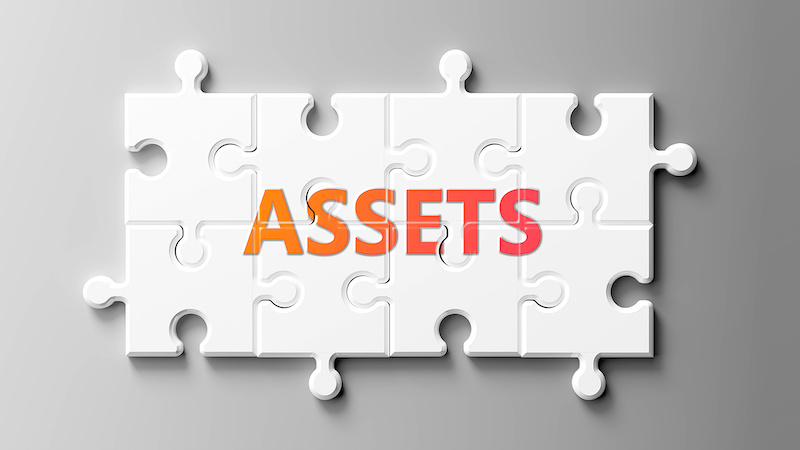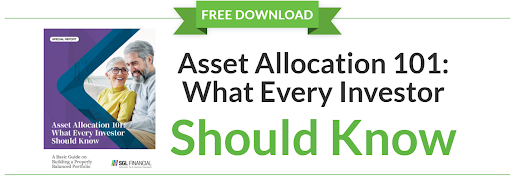Various Types Of Assets To Consider For Inflation
by Gabriel Lewit

Inflation is one of the most pressing issues facing investors today. With rising interest rates and inflation still on the horizon, it’s more important than ever to protect your assets from the effects of rising prices. This can be done by investing in assets that are less vulnerable to inflation.
This article will cover various assets to become aware of that can help you hedge against inflation such as:
- Government-issued treasury securities (TIPS)
- Real estate and real estate investment trusts (REITs)
- Commodities
- Precious metals
Not sure which way to go based on your investment history and risk tolerance? A financial advisor in Buffalo Grove, IL, at SGL Financial will look at each one with you to decide if any might be right for your portfolio!
How inflation is impacting investments
Inflation is when a currency loses its value over time, which can be caused by high prices for goods and services, or by an increase in the money supply. And when inflation affects investments, it means that the purchasing power of those investments will be reduced over time.
Inflation impacts assets in different ways depending on what they are and how they’re used. For example:
- If you have bonds that pay interest every year, then your income will increase every year due to inflation because the bond’s coupon rate will adjust higher annually. This helps offset some of the impacts on your investment as it grows – just remember that reinvesting this additional income will also cause inflation to erode your capital balance even faster than if you were simply holding onto cash alone.
- Stocks give returns based on a company’s profits (and hopefully dividends). The problem is that these profits aren’t adjusted for inflation so as a result, they’ll decline in real terms over time. At the same time companies tend to not do well during periods where there’s high inflation because their costs go up faster than sales revenues increase due to price increases eating into profit margins.
What factors should I consider when choosing which assets to include in my portfolio?
When choosing which assets to include in your portfolio, there are many factors that you need to consider. One of the most important is asset allocation – the strategic selection of your investments between different types of assets, such as stocks, bonds, cash, real estate, commodities, etc.
Strategic asset allocation can help mitigate risk while helping to maximize returns over time by diversifying your portfolio with various investments that have different levels of risk and return potential. The process helps ensure that you don’t put too much money in one place, which could lead to large losses if the investment takes a turn for the worse.
Equities and fixed income securities can play a role in a well-diversified portfolio.
As you consider what assets to include in an inflation-adjusted portfolio, common types of assets are equity securities and fixed income securities.
Equity securities are those that represent ownership in a company, such as stocks and bonds. The price of equities fluctuates based on market factors such as supply and demand for their shares; the more people who want to buy them, the higher their price goes. Conversely, if too many people sell at once then prices will fall.
Fixed income securities pay a set rate of interest over time but don’t offer any potential for growth like securities do (though they may provide some protection from inflation). Knowing when to hire a financial advisor and how to find the right one for you, will play a large role in selecting the right equities, fixed income securities for your portfolio, and beyond.
In today’s environment, what else should I add to my portfolio mix?
The current economic environment is one of uncertainty and volatility. While the next recession hasn’t arrived yet, there are signs that it may be on its way—the yield curve has flattened at an unprecedented rate and the S&P 500 has fallen about 10% since its all-time high in January. As a result of these factors, investors have been nervous about their holdings and many have pulled out of stocks altogether in favor of seeking safer investments like cash equivalents such as CDs (certificates of deposit).
But while safe assets are good for locking up value during uncertain times, they also offer little return—you certainly won’t see any returns if you’re just holding cash! And if inflation rears its ugly head again as expected by many economists (and this time most likely accompanied by a recession), then your purchasing power could drop significantly over time unless you invest wisely now.
Alternative investments can be an important part of a diversified portfolio
Alternative investments can help you hedge against inflation, market volatility, and interest rate risk.
For example, if you have a portfolio with most of its assets in stocks and bonds that are historically correlated to one another (i.e., they tend to move up and down at the same time), then alternative investments provide another way for your overall portfolio to benefit from different types of returns.
Inflation-adjusted returns are also often higher for alternative investments than traditional holdings like stocks or bonds.
Treasury protected securities
Treasury-protected securities are backed by the U.S. government, so they’re one of the safest investments you can make when it comes to protecting your money from inflation. That being said, they’re also worth considering if you want to take advantage of rising interest rates as well. Treasury-protected securities offer higher rates than traditional savings accounts and CDs (certificates of deposit) but still provide safety against inflation over the long term.
You can use alternative investments if you have reached the maximum Treasury purchase limit with your retirement plan.
If you have reached the maximum purchase limit of government bonds or TIPS, or if you simply do not want to invest in those types of assets, then you may want to consider other alternatives.
For example, you can purchase up to $10,000 per year in I Bonds, which are low-risk and have a fixed interest rate that never changes during their lifetime. The interest rate paid is based on an average of inflation over the last five years and is set every May 1 and Nov 1.
Real estate to hedge against inflation
Real estate is a tangible investment asset that you can touch and feel. It’s also an inflation hedge, which means that its value tends to increase during times of rising inflation. This means that real estate is a hedge against the stock market, bond market, and dollar as well as other forms of currency like gold and silver.
Real estate can be divided into residential real estate (homes) and commercial real estate (offices/stores/malls), though there are various types within each category and various ways in which you can invest in them. Real estate investment trusts (REITs) are publicly-traded companies that own or finance income-producing real estate such as apartments, shopping centers, and medical office buildings.
Commodities to hedge against inflation

Commodities are a good way to hedge against inflation. Some of the most common are agricultural goods, products such as financial instruments, foreign currencies, stock indexes that trade on a commodity exchange, petroleum, and metals.
Precious metals to hedge against inflation
Gold and silver are the most obvious assets to consider as inflation hedges, and they have a long history of serving this purpose. They’re not correlated with stocks, so they’re useful diversifiers in your portfolio, but they also provide you with potential returns that are independent of stock market fluctuations.
How can these investment options fit into my overall asset allocation strategy?
In order to choose the best asset allocation strategy, you need to consider a variety of factors:
- How much risk you’re willing to take on
- Your time horizon for investing (when you plan on withdrawing your funds)
- Your tolerance for volatility (investments tend to go up and down over time)
- The amount of money at stake in relation to your overall net worth or income
Work with a financial advisor at SGL Financial to protect your nest egg
You should work with a financial advisor if:
- You need help navigating complex decisions and investments in order to achieve your long-term goals.
- You want trusted experts to advise you about how to best manage your money for the future, whether it’s retirement savings or college savings accounts for your kids.
- You don’t have the time or resources it takes to manage your own investment portfolio, but still want to participate in the stock market as a way of growing wealth over time and generating income from dividends when appropriate (which isn’t always).
- You want someone who has access to specific tools, strategies, and research that can help make investing more effective for you as an individual investor, even if they aren’t necessarily using those tools themselves.
Are you ready to take a deeper look into different investment opportunities to diversify your portfolio and hedge against inflation?

